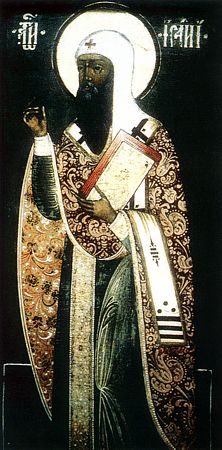
Saint Isaiah, Bishop of Rostov († 1090)
Commemorated on May 15 (day of his repose), May 23 (with the Synaxis of the Saints of Rostov and Yaroslavl), and on the Second Sunday of Great Lent (with the Synaxis of all the Venerable Fathers of the Kiev Caves)
Saint Isaiah, the God-bearing hierarch, was first a monk of the renowned Monastery of the Kiev Caves. At the request of Grand Prince Iziaslav Yaroslavich, he was sent by the venerable Theodosius of the Caves (commemorated on May 3) to become abbot of the Monastery of the Holy Martyr Demetrius, which had been founded by the prince himself. There, for fifteen years, he labored in asceticism, “emulating the angelic life,” offering up a life of prayer and obedience as incense before God.
After this, he was consecrated as bishop of the city of Rostov by Metropolitan John. At that time, Rostov had not yet been firmly established in the Orthodox faith, and paganism still darkened the hearts of many. As a true shepherd of Christ, Saint Isaiah traversed the lands of Rostov and Suzdal, proclaiming the glad tidings of the Holy Gospel. He broke down the idols of false gods, baptized many into the saving waters of Christ, and strengthened the faithful in the truth of the Orthodox confession.
Toward the close of the twelfth century, after his holy repose, the incorrupt relics of Saint Isaiah were discovered within the Church of the Most Holy Theotokos in Rostov - a divine confirmation of his sanctity and labor in Christ.
• Saint Isaiah received the monastic tonsure at the hands of the venerable Theodosius. In the year 1065, he was appointed abbot of the Monastery of Saint Demetrius, established on the princely court in Kiev.
• He was elevated to the episcopal see of Rostov following the repose of Saint Leontius (commemorated on May 23).
• The holy relics of Saint Isaiah were uncovered on May 23, 1164, together with those of his predecessor, Saint Leontius, and were enshrined in the Church of Saint John. Veneration of the saint began in earnest following the translation of his relics in the year 1474, at which time his Life was also composed.
